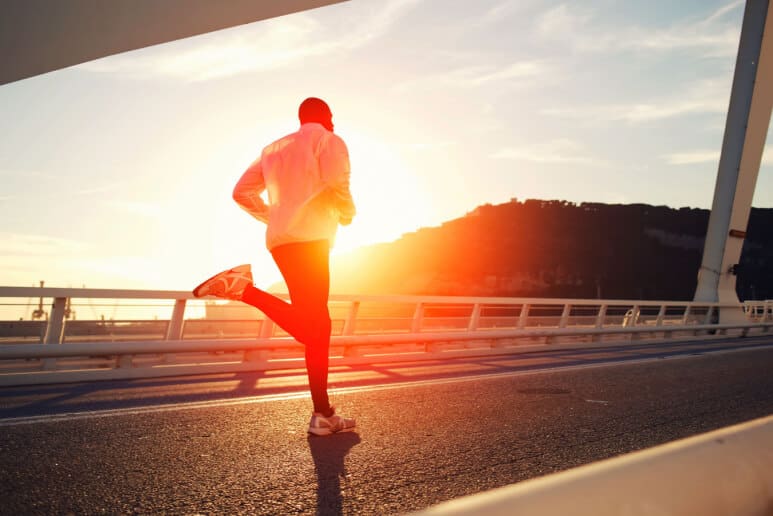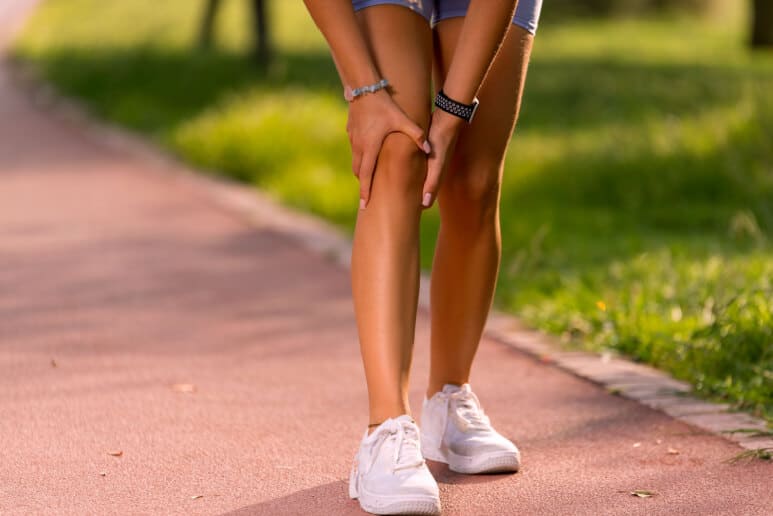What Is Runner’s Knee: Definition, Symptoms, & Recovery Techniques
Running is more than just a physical activity. For many, it’s a passion, an escape, and a reflection of inner strength and determination. But like any exercise, it’s not without disruptions.
In the world of running, Runner’s Knee is one of the most frequent disruptions. This discomfort can plague anyone, not just seasoned runners, striking even the casual jogger or those engaged in other physical pursuits.
What’s perplexing about Runner’s Knee is its ability to creep up on us. One day you’re cruising through your miles or bounding up stairs. Next, every step becomes a calculated endeavor to minimize discomfort. Its ability to sideline our routines makes it essential to understand and address.
The good news? Knowledge is power. By understanding its roots and remedies we can better equip ourselves to keep the rhythm of our runs uninterrupted.
This journey is crucial, whether you’re a dedicated marathoner, a weekend trail enthusiast, or just someone who values being on the move. This guide offers insights and tools to help you return to your optimal stride.
But first, what is runner’s knee, and how do you identify it?
What Is Runner’s Knee?
Runner’s knee in medical terms is called patellofemoral pain syndrome. At its core, it refers to pain emanating from the kneecap (patella). While runners often grapple with it, they aren’t the sole recipients. Diverse athletes, gym enthusiasts, or even those with strenuous daily routines can develop patellofemoral pain.
Runner’s Knee is characterized by specific symptoms. The pain typically centers at the front of the knee. It’s often accompanied by a kneecap that is tender to the touch. This isn’t a dormant discomfort. It screams for attention, especially during knee-intensive activities like squatting, climbing, or prolonged sitting. Routine activities suddenly become daunting, overshadowed by the lurking pain.
Its inception varies. Sometimes, an unusual exertion or misstep brings it into the limelight. Other times, it’s the silent accumulation of repetitive stresses on the knee joint over extended periods. Understanding its nuances (and getting a physical exam) are the first steps in addressing this ailment.
How Does Runner’s Knee Happen?
The human body is an intricate marvel. Every part, no matter how minuscule, plays a role. The knee, acting as a bridge between our thighs and lower legs, is one of the most frequently used joints.
It’s no surprise, then, that it can fall victim to overuse, misalignment, and strain. But the question arises: Why does Runner’s Knee specifically develop?
Short answer: imbalance. Muscular strength imbalance, especially between the quads and hamstrings, can lead to undue strain on the knee.
Runners and athletes push their limits. The constant pounding and repetitive motion, if not met with adequate muscle support, can wear down the cartilage underneath the kneecap. This wear and tear translates to pain and discomfort.
However, it’s not solely about muscles. Biomechanics plays a part too. Flat feet, improper running shoes, or even a skewed stride can amplify the stress on your knee joint. Walking or running with the feet rolling in while the thigh muscles pull the kneecap outward can also contribute to misalignment.
Think of it as a machine running with one slightly misaligned gear. The wear doesn’t just stay localized to that gear – it impacts the entire mechanism. Similarly, a slight irregularity in foot arch or gait can cascade to significant discomfort at the knee.
Previous injuries come back to haunt. A past trauma, if not adequately rehabilitated, can lay the foundation for future vulnerabilities. Understanding the origin of Runner’s Knee, whether it be muscular, biomechanical, or injury-driven, is the cornerstone for effective intervention and recovery.
What You Can Do About Runner’s Knee?
The pain and disruption of Runner’s Knee can be daunting. It leaves individuals feeling at the mercy of their ailment. However, hope is far from lost. Many have navigated the turbulent waters of this discomfort and emerged stronger on the other side. All thanks to proactive interventions and the wonders of modern physical therapy.
Firstly, recognize that Runner’s Knee isn’t an irreversible sentence. With the right tools, guidance, and patience, recovery is achievable. Often, the journey begins at home. Understand your body and be on the lookout for early signs of discomfort. From there, you can start employing strategies and tools to alleviate and prevent the pain.
Healing time varies depending on the condition’s severity, consistency in treatment, and your body’s response to it. That’s why it’s equally important to find pain relief and prevent future occurrences. Remember, it’s as much about relief as it is about prevention.
Prevention often starts with equipment. Proper footwear that suits your arch and stride can make a world of difference. It’s akin to laying a stable foundation for a building. Complement it with strength training. If you strengthen the muscles around the knee, you can bolster its resilience against repetitive stresses. Don’t skip those squats and lunges; they’re your knee’s best friends.
Lastly, consider seeking professional guidance. It’s still the best treatment for runner’s knee. Physical therapists or experts, like those at The Ready State, bring a wealth of knowledge and tailored techniques to the table. They understand the unique challenges and nuances of each individual’s body and can craft a roadmap to recovery that’s tailored for you.
Techniques for Reducing Runner’s Knee Pain
Gua Sha
Gua Sha is a traditional technique often referred to as scraping therapy. It can relieve tension and promote healing. Hold it like a scraping tool at a 45-degree angle and diligently working on tissues surrounding the knee. Think of it as a focused massage, targeting stiff or painful tissue, encouraging blood flow and relaxation.

Voodoo Floss Knee Mobilizations
This might sound magical, but this mobility technique is grounded in science. It requires the use of elastic bands, like the Voodoo Floss bands. You wrap it around your knee to enhance movement and recovery.
The bands facilitate increased blood flow, allowing for a gentle joint mobilization. Integrating squats and lunges while the band is on can further accentuate its benefits.

Quad Smash
The quads, as primary movers of the leg, are central to knee health. Over time, stiffness in these muscles can directly contribute to knee pain.
The Quad Smash technique is a direct response, encouraging relaxation and flexibility in these vital muscles. Consistency is key. Integrating this technique daily can be a game-changer.
Hamstring Lockouts
The hamstrings, though on the opposite side of the quads, play an equally critical role. Chronic sitting or incorrect posture can lead to these muscles becoming shortened. You only need to use basic tools like a band or belt.
The Hamstring Lockout technique aims to reintroduce flexibility and strength, countering the impacts of daily life.
Get Rid Of Runner’s Knee With TRS
The road to understanding and addressing Runner’s Knee can be riddled with challenges. However, it’s a journey worth taking. You can do self-administered techniques, get professional guidance, or both.
Every step taken towards recovery is a stride away from physical conditions and health problems. Runner’s Knee, though common, doesn’t have to be a constant companion. With the right tools, techniques, and tenacity, you can traverse the path of recovery. Give yourself the opportunity to rediscover the joy in every step, sprint, and marathon.
Increase your range of motion and get your ready state back.
Aspiring to be a movement and mobility specialist? Here’s how The Ready State can support your coaching journey today.




















TRS Virtual Mobility Coach
Guided mobilization videos customized for your body and lifestyle.
FREE 7-Day Trial